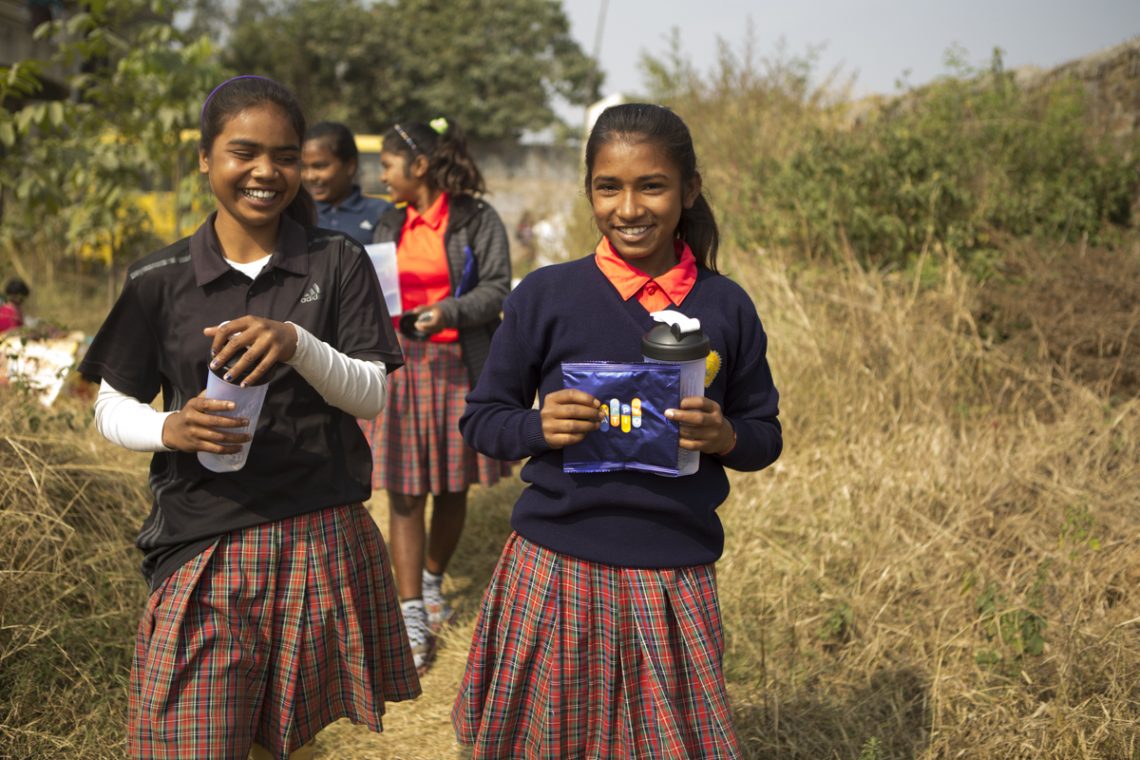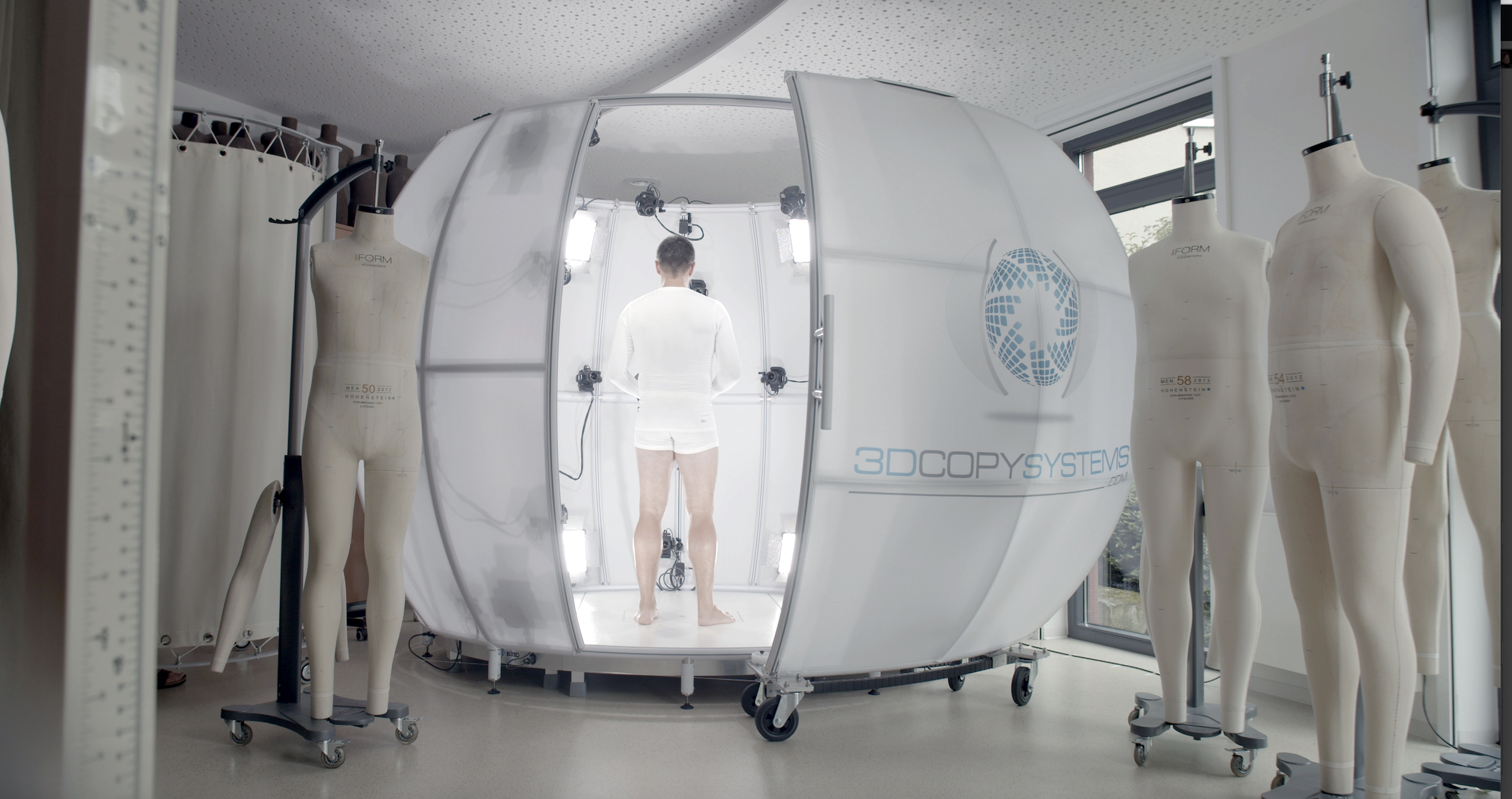In Jhakrand, a state in rural India, six in ten girls become child brides and thousand are trafficked each year as laborers or sex workers. Yuwa, a not-for-profit that aims to break the cycle through a soccer and education program, found an affordable way to nourish the girls through Blendhub, a Spain-based company that makes sustainable food from powder-based ingredients and recipes: a tasty personalized nutrition meal shake that the girls could drink on the soccer field. (see the photo).
Blendhub upcycles surplus food or scraps, such as orange peels, which would otherwise wind up in the garbage, by using a dehydration technique that transforms them into valuable powdered food ingredients with a high nutritional value and long shelf life, a process founder and CEO Henrik Stamm Kristensen’s calls fresh2powder2fresh. The end-product can be turned into liquids, solids or gels that are edible for five years, providing affordable nutritious meal ingredients for lower and no income families.
The Spanish company uses a platform business model that allows startups and SMEs around the globe to use this approach to launch healthy and affordable food and nutrition in sustainable global supply chains, with an aim of having a real impact on food security and climate change. (Some 6% of global Co2 emissions are from food waste.)
“We need to move to a platform model to collaborate for the global good, otherwise we will not solve food security or supply chain issues, “says Kristensen. “We will only solve this in a collaborative manner.”
Blendhub, which started life in a garage 25 years ago, is a member of the World Economic Forum’s New Champions community. It foresaw the need for localization of production near raw materials and end consumers long before recent supply chain issues started pushing companies to adopt this strategy. It has successfully developed technology and leveraged the platform business model to grow the company, and it is collaborating with other companies to try and help solve the U.N.’s Sustainability Goals.
“Blendhub is a good example of how smaller purpose-driven companies can impact real problems,” says the Forum’s Olivier Woeffray. Its journey also offers valuable insights into how those companies can leverage their superior ability to reconfigure and pivot quickly, which can give them an edge over larger competitors.”
The Power Of Localization
Kristensen, a native of Denmark, began his career in the food industry as an adolescent, working as a cook in a retirement home and in a bar. “What impressed me was that everything in the global food chain has to do with recipes and ingredients,” he says. From there Kristensen went to work in the industrial food industry for 12 years. While running a Spanish subsidiary for a global food company Kristensen met his future wife and decided to settle there. He launched his first food tech company in Spain in 1997. The premise was “kill the black box,” which meant introducing an unprecedented level of transparency into the food ingredient business. Long term customers were told where the ingredients came from, who produced them and how much Kristensen’s company paid for them. The openness “was something the industry had never seen before,” Kristensen said, and it resonated with customers. The company grew sales in Europe and then started exporting to the Middle East in 2002. The reasoning was that the transport time was limited and it would not add substantial cost to the recipes, meaning the company could be reasonably competitive with local suppliers. At that time Kristensen decided to spend €15 million on a state-of-the-art factory in Spain. “It was the stupidest thing I have done in my life,” he says. “Why build in Spain when all the ingredients were coming from countries far away and we were then exporting the solutions to the Middle East?” he asks. “That is when I realized that we should create a different system.” Blendhub decided to build the factories where the raw materials are produced and localize food production.
It took two years but Blendhub figured out how to build and deploy an ingredient blending factory inside a 40-foot shipping container. Then it had to figure out where the portable factory could generate the most value. The company identified a recipe it was supplying to the beverage industry that used guar gum, a substance extracted from guar beans that has thickening and stabilizing properties useful in food, feed, and industrial applications. Guar beans are found in India and Pakistan, so Kristensen sent a team to India to hunt for the best location for the portable factory. It took six months to find the right place. Blendhub set up the shipping container in a building in an industrial zone north of Chennai, where it felt it could ensure high food security. It hired a local team to operate it and less than a week later started producing the recipe out of India. Localization led to the company’s “biggest magic moment,” says Kristensen. “Being closer to the ingredient supply and closer to the consumer in Dubai saved us 30% on the cost of the recipe,” he says. It was an eureka moment. “Suddenly we realized that if we can save 30% on one recipe using the superpower of localization, we could hypothetically save 30% on all of our recipes and that we could use that as our main competitive tool.” Kristensen says he immediately offered a big customer in Dubai a significant discount and “since 2011 we have been their main supplier without interruption.”
The arrangement is also beneficial to local communities, he says. The portable plants are operated exclusively by locals. In addition to providing jobs the plants always give preference to buying local ingredients, empowering local suppliers and farmers.
Over the next 11 years Blendhub opened seven hubs on four continents: two in India, one in Thailand, one in Colombia, one in Mexico and two in Spain. The hubs are not stand alones. They work together on a global platform and are connected by the Cloud. To identify where raw materials are available on its platform Blendhub uses near infrared technology to scan food powers and upload the information about them to the Cloud so that, for example, Blendhub’s operation in Colombia can learn about what is available in India, and vice versa.
Food-As-A-Service
Kristensen realized that the company could earn additional revenues and expand its reach by opening its platform to different stakeholders, an approach it calls “food-as-a-service.”
Blendhub’s platform model for food production services helps companies and brands to develop and launch products, tackle new markets, and innovate without the need for investment in their infrastructure, he says. The pay-per-use services comprise design and production and a range of additional services for brands and raw material providers.
The approach encompasses B2B, B2C and B2G (government) models. For example, a Spanish company specializing in a formula for gluten-free bread needed help to enter the Mexican and U.S. markets. Blendhub had the company send the pre-blend formula to its portable plant in Mexico and added local ingredients to its core blend. Blendhub then introduced the product to a distributor in the U.S with a wide market and experience the bakery sector. In B2C “we are empowering SMEs on our platform to go much faster from ideas, to test, to validation and launch,” he says. Blendhub provides the infrastructure. The small companies sell under their own brand. And, “just as we can empower others to succeed in the B2C space, we can do exactly the same for the underserved with a B2G model,” says Kristensen.
Helping Improve Nutrition And Health
Similar to the way Blendhub was able to provide a nutritious shake to the girls being cared for by the NGO in India, governments or sponsors could underwrite the cost of Blendhub’s formula for nutritious school meals for everyone who can’t afford them in both developing and developed countries, says Kristensen.
.“We can produce a product that is high in vitamins, nutrients and some proteins, and the operational cost is say $1 a kilo, which means we can make a product that is not only healthy and nutritious but as affordable as fast food,” says Kristensen. “People with low incomes spend a $1 for a hamburger from a fast food chain because it gives them a feeling of instant satiety even though it has no nutrients. Imagine if I could use that $1 to give them tasty, delicious, nutritional shakes that just need added water.”
Blendhub’s manufacture of nutritious products always starts with powders, but it can adapt the final process, based on what type of filling machine is used, to include everything from bars to bouillon cubes or shakes.
Blendhub collaborates with a wide range of machinery producers, technology companies, freelance formulators and nutritionists, platforms and companies like Essence Food or Qina to accelerate the conversion of food waste to powder and to foster the global use of these ingredients into healthy and affordable food and nutritional products. And Chemometric Brain – a startup spin off from Blendhub – is working on digitizing upcycled food quality in a platform based collaborative model.
If people could suddenly afford one nutritional meal a day “government could avoid a big part of its spending on healthcare,” he says. “It is one of the reasons that Blendhub is excited about being part of the New Champions program because addressing these problems will take public-private collaboration.”
Lessons Learned
Kristensen says Blendhub’s journey has taught him several lessons. One is it doesn’t make sense to build factories far from where the raw materials originate. A second learning is that “if you take things like orange peels or seaweed or other upcycled food this can be turned into powder and again sent back into the value chain as nutritious and affordable food recipes,” he says. A third is, as almost any young company pioneering a field knows, is that going it alone is hard. “One of the things that I recommend to SMEs and to startups is to work together with value aligned people and companies,” he says. “When you work in a constellation, using a platform business model with other people and companies that add value to your idea, this is where magic happens.” He believes that that rather than taking venture capital it is better to “incentivize people and companies to work together and if successful share the value between them in an equitable way.”
Why The Current System Needs Shaking Up
The current system, which is made up of big groups that dominate the global food distribution chain, is inequitable: Some 80% of the world’s food is produced by 500 million farmers along with startups and SMEs but they reap only 20% of the value, says Kristensen. What’s more a percentage of people in every country are malnourished and develop health problems from eating a poor diet, creating burdens on government-funded health services. The technology has been developed to make delivering nutritious food to them affordable and doable but getting there will take collaboration and systemic change. All good reasons, he says, for companies to join Blendhub in shaking up the current way that food is produced.
This article is content that would normally only be available to subscribers. Sign up for a four-week free trial to see what you have been missing.







